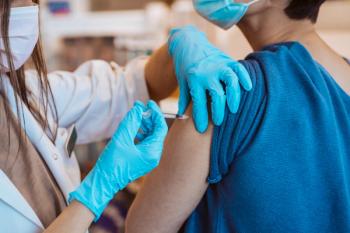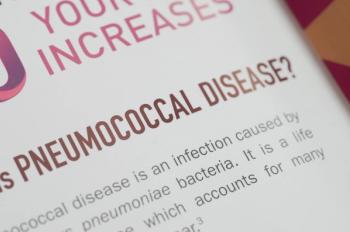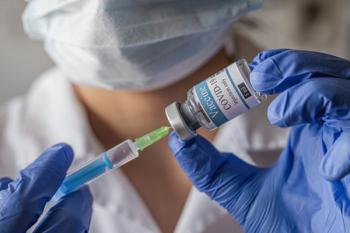
Interactive Risk Ratio Simulation Abates Vaccine Hesitancy
Vaccine-hesitant adults were more likely to show positive change in opinion after being presented with an interactive risk ratio simulation according to a new study.
Adults presented with an interactive risk ratio simulation were more likely to positively change their COVID-19
COVID-19 vaccines are a key tool in fighting the pandemic, but most countries still remain below the uptake rates needed to relieve pressure on hospitals and intensive care units (ICUs), with only 65% of Americans vaccinated twice. Adults who are vaccine hesitant often require information on the benefits and harms of the vaccine to help them decide to receive the vaccine. This study aimed to assess the value of an interactive risk ratio simulation in changing an adult’s vaccine intention compared with a text-based format.
A cross-sectional national sample of German residents who were unvaccinated against COVID-19 and vaccine hesitant made up the patient sample, and this sample was taken from a probability-based internet panel maintained by a research and analytics firm. The respondents for this sample completed an online study between April 1 and May 21, 2022, and they answered whether they were vaccinated or not and their intention to get vaccinated. Only those who responded that they probably would, were unsure if they would, or probably would not get vaccinated were included in the overall study.
Participants were also asked if they worked in health care, about their satisfaction with containment strategies put in place by the government, and for their assessment of a benefit-to-harm ratio of the COVID-19 vaccine and their general attitudes toward COVID-19 vaccination. Participants were randomly separated into 2 groups: a text-based one or an interactive simulation. The content was identical for both groups.
The primary end point of the study was participants who had a positive change in their vaccination intention and benefit-to-harm assessment. There were 1255 participants who had a mean (SD) age of 43.6 (13.5) years; 87.6% were aged 18 to 59 years, 52.6% were women, and 60.5% reported qualifying for or finishing higher education.
Overall, participants who were vaccine hesitant were more educated and younger than the general German population.
In addition, participants in the intervention group were more negative in their benefit-to-harm rating, with 55.0% feeling that the vaccine’s harms “clearly” or “somewhat” outweighed the benefits. The intervention group was also less likely to have a higher level of education (odds ratio [OR], 0.72; 95% CI, 0.57-0.91), and more likely to to be satisfied with COVID-19 containment strategies (OR, 1.52; 95% CI, 1.20-1.94) and about long-term adverse effects of the vaccine (OR, 1.18; 95% CI, 1.04-1.39).
The researchers found that the interactive simulation was associated with a greater likelihood of a change in intention to receive a COVID-19 vaccine compared with the control group (19.5% vs 15.3%, respectively; adjusted OR [aOR], 1.45; 95% CI, 1.07-1.96). Respondents were also more likely to improve their benefit-to-harm assessment when using the simulation compared with the control group (32.6% vs 18.0%; aOR, 2.14; 95% CI, 1.64-2.80). Net advantage of the interactive simulation was 5.3 percentage points for vaccination (9.8% vs 4.5%) and 18.3 percentage points for the benefit-to-harm assessment (25.3% vs 7.0%).
The proportion of respondents that had a decline were comparable in both groups for vaccination intention and benefit-to-harm assessment.
Participants who were male (aOR, 1.37; 95% CI, 1.02-1.85), were qualified or had completed higher education (aOR, 1.86; 95% CI, 1.35-2.57), and were satisfied with the government’s strategies for containment (aOR, 1.77; 95% CI, 1.28-2.46) were more likely to have a positive change in their vaccination intention but not in their benefit-to-harm assessment. Health care workers were also 53% more likely to have a positive change in the benefit-to-harm assessment after the intervention (OR, 1.53; 95% CI, 1.02-2.36) but 53% less likely to have positive change in vaccination intention (OR, 0.47; 95% CI, 0.25-0.90).
The generalizability of the results could be limited by the participants all being from Germany, as well as that the behavioral intentions on long-term behavior of the residents is unclear due to the study's cross-sectional design. Questions on why participants changed their opinion also were not asked.
The researchers concluded that “vaccine-hesitant might benefit more from interactive risk simulations than from text-based formats.”
Reference
1. Wegwarth O, Mansmann U, Zepp F, Luhmann D, Hertwig R, Scherer M. Vaccination intention following receipt of vaccine information through interactive simulation vs text among COVID-19 vaccine-hesitant adults during the omicron wave in Germany. JAMA Netw Open. Published online February 16, 2023. doi:10.1001/jamanetworkopen.2022.56208
Newsletter
Pharmacy practice is always changing. Stay ahead of the curve with the Drug Topics newsletter and get the latest drug information, industry trends, and patient care tips.

























































































































































